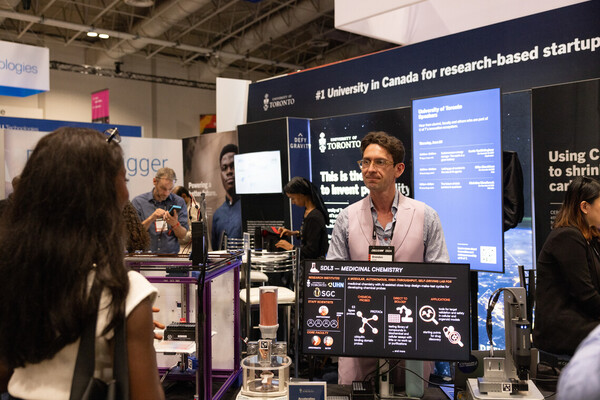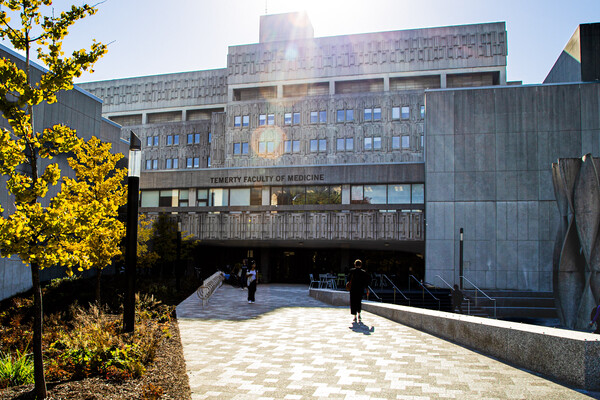Main Second Level Navigation
Breadcrumbs
- Home
- News & Events
- Recent News
- (The Price of a) Dream Team
(The Price of a) Dream Team

The costs connected to medical school applications can add up quickly, from admissions tests to processing and transcript request fees. For some students, budget is the limiting factor that ends their dream of becoming a doctor.
But a group of learners and staff at the University of Toronto’s Temerty Faculty of Medicine, called Price of a Dream, are helping eliminate financial barriers for applicants from low socioeconomic backgrounds.
“There’s support for students once they make it into medical school in the form of grants and bursaries or lines of credit and loans, says Justin Lam, a paediatrician, U of T alumnus and Price of a Dream team member. “Until recently, there’s been little support for people applying. Finances shouldn’t be the barrier that prevents people from getting in.”
There are also opportunity costs associated with med school applications, Lam says. Time spent studying for the Medical College Admission Test, for example, or volunteering and fulfilling other application requirements, is time applicants cannot spend working to fund their applications.
Those opportunity costs can upend good intentions and financial planning.
“Imagine you’ve spent the whole summer preparing your application and some of the previous year getting ready to apply. Then you realize you might not have the money,” says third-year medical student Chantal Phillips. “People do everything they can just to get to that point, but if you don’t have the funds, your dream stops there. Your submission becomes contingent on your credit card number.”
Price of a Dream grew out of Community of Support, which supports students from under-represented groups by providing mentorship and resources to help them through their journey to medical school and other health professions education programs.
In the Price of a Dream’s early days, the team identified the various costs associated with applying to medical school. The team worked with U of T computer science students to create a cost calculator to give applicants a better idea of how much they would need to budget for their applications.
In addition to fixed costs like the Ontario Medical School Application Service fee, the tool also accounts for expenses including fees for applying to individual medical schools, which vary by school and range up to $130.
Phillips says the cost of applying to medical school can amount to thousands of dollars, particularly when expenses like MCAT prep courses (which can cost up to $2,500), study guides and practice tests are factored in.
As well, many students take the MCAT up to three times at a cost of $320 USD each time. Some students also apply to all six Ontario medical schools and may apply in more than one application cycle.
“There are expenses people might anticipate and others they may not foresee like transcript fees or the cost of CASPer, which is another test some schools require, says Phillips, who also works part-time for Price of a Dream as program manager.
“If a student has a mentor or some other connection to the world of medical education, they might have a better sense of the hidden costs. But, if you don’t know, you might only see the step ahead of you and not know to plan for the three steps further down the line,” Philips says.
The team’s mission quickly evolved to include developing financial supports to put medical school within reach of a greater number of students.
Their most recent project is the Ontario Medical School Application Fee Waiver program.
It enables students to have their $220 OMSAS processing fee waived and grants free applications for up to three Ontario medical schools, for a total savings of up to $600.
The pilot program was developed by the Council of Ontario Faculties of Medicine (COFM), the Association of Faculties of Medicine of Canada, the Ontario Universities’ Application Centre, Community of Support and Price of a Dream.
The pilot is funded by the Council, and Community of Support covers project-related expenses including hiring students to help market and promote the pilot.
Though multiple members of Price of a Dream are here in Toronto, the team also includes learners studying medicine at McMaster University, University of Ottawa, Dalhousie University and Ohio State University, as well as representation from Francophone medical students.
“This work has always been about transcending institutions through a participatory design model that centres student perspectives,” says Ike Okafor, senior officer, service learning and diversity outreach. “There’s a strong culture here at Temerty Medicine that includes great leaders who resource the work and outstanding students who co-create solutions with staff. The enthusiasm here is inspiring and the work we’re doing is being used as a model across the country.”
The Ontario Medical School Application Fee Waiver program is open through August 23. To learn more, click here.
Dean's Report 2021


